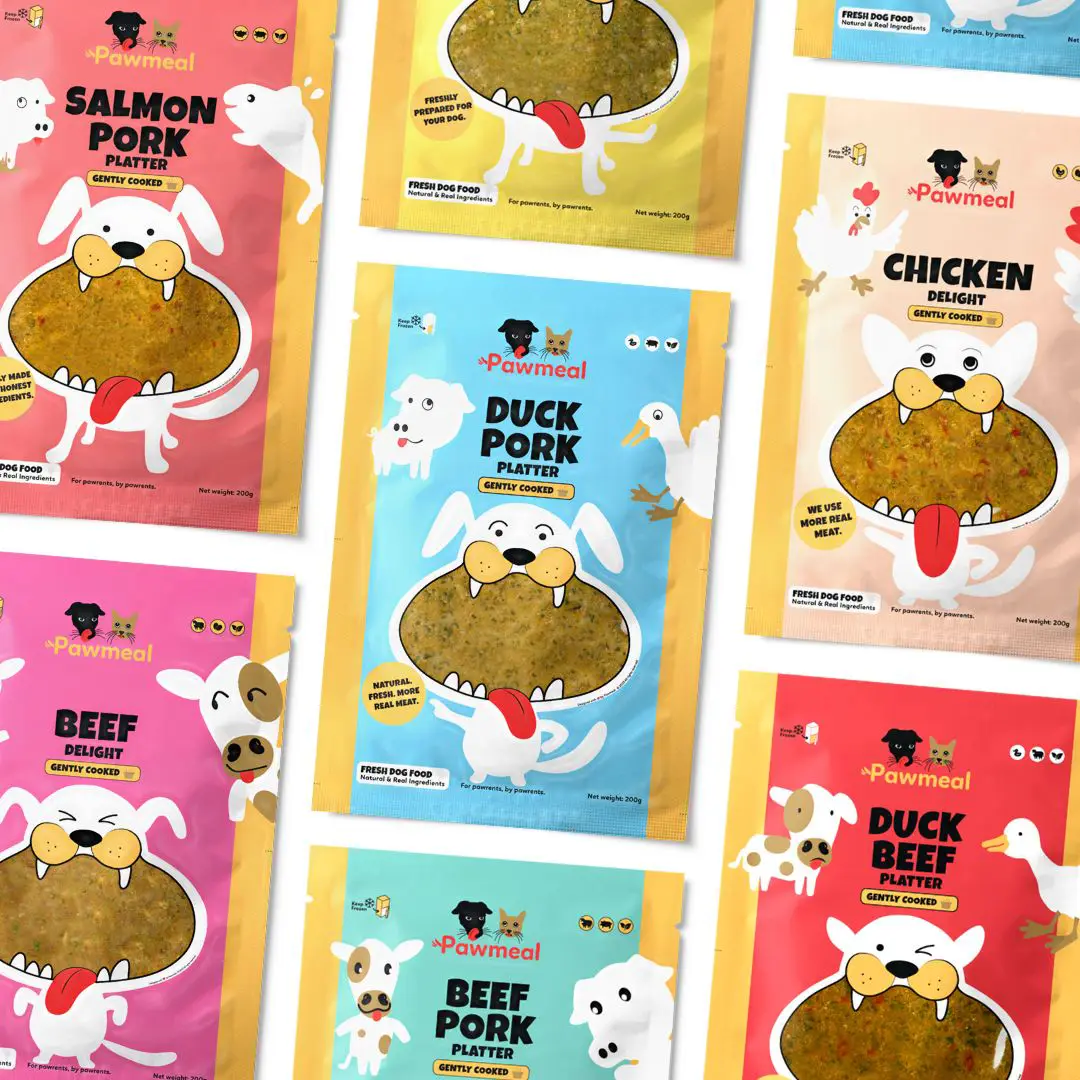When you see your dog scratch or itch somewhere on its body, it can be due to different reasons. Your pup may be bored and want your attention. It may be craving for some play time. Or it can also be due to fleas or ticks (😰). But when you see your dog scratch itself until its fur drops or skin reddens, your dog may have facing some problems! It may be due to a food allergy and your dog is displaying symptoms and reacting to it. Let’s understand more about dog food allergies here!
How does a dog food allergy come about?
Usually, dogs experience food allergies when their digestive systems fail to completely break down the foods they gobbled and to absorb the vitamins and nutrients fully. Overtime, their digestive systems begin to think that these indigestible foods are diseases and reject them.
What is the most common food that causes food allergies in dogs and cats?
While speaking with customers and paw parents, we have come to discover that there can be all sorts of surprising food allergies in the many dogs that we have met!
Examples of allergic ingredients include rice, anchovies, carrots, broccoli and even coconut!
As for the most common allergic ingredients we have come across thus far? Meat. But despite public opinion that chicken meat are very common among allergen foods, we have not found any clear signal that poultry meats are indeed suspect so far. For allergen foods, it seems chicken, pork, duck, and beef are just as likely to be allergic to dogs.
How do you know if your dog has a food allergy?
Dog scratching and itching (having an itchy dog) are one of the most common dog food allergy symptoms. 💥 It is the most prevalent and earliest symptom (related to food allergies) found in dogs.
And according to a study, if your dog scratches its ears, it has a 80% chance of a correlation to a food allergy issue!

Scratching other parts of the body:
Paws = 61% correlation to food allergy
Inner thigh or belly = 53% correlation to food allergy
Eye or front leg = 33% correlation to food allergy
Most common dog food allergy symptoms
Besides itching and scratching, here’s other allergy symptoms which may be signs of a food allergy:
- Dog scratching or itching
- Sneezing
- Hot spots
- Rashes
- Scaly skin
- Dropping fur
- Infections
- Behavioral changes
How to tackle a potential dog food allergy at home
The simplest solution is to avoid the allergen cause altogether (the ingredient that causes the allergy).
But obviously, it is not so straightforward, because you are not sure what is the exact ingredient in the first place! To determine the exact allergen, you will need a process of elimination in the diet.
Yes, but easier said than done right? It does not help too, when you are either panicking over your dog or simply overwhelmed to trace back the multitude of food that your dog has eaten over the past week. (It’s quite similar to feeling unsure about what food causes food poisoning in the hooman.)
Suggested step-by-step approach to tackle potential dog food allergy:
Therefore, here’s a few simple tips to follow, so you can be better equipped in a food allergy reaction situation (lots of discipline and patience needed!):
- Recall what you feed recently and identify potential allergen foods
- Avoid feeding extreme changing of food constantly
- Monitor with current diet and tweak based on your dog’s reaction
- Try giving variation by alternating food for your dog
1. Recalling what you feed recently and identifying potential allergen foods
It helps to recall the ingredients that your dog has eaten recently. If you keep notes of your dog’s diet, perfect! Otherwise, inspect the main ingredients of your dog’s diet. Or check if anyone is feeding some different food recently. The objective here is to identify potential allergens (usually new to your dog). Then, you can proceed to eliminate the suspects, one at a time. (Try not to eliminate all at once! You will not be able to know which is the exact cause if you eliminate everything together). Because knowing is understanding. And your dog needs you to understand it better.
2. Avoid feeding extreme changing of food constantly
Most of the time, extreme allergic reactions are due to a drastic change in food that the body is unable to cope. So in the first place, introduce change gradually. Alternating food is good most of the time.When there is already an allergic reaction to a food, avoid ‘guessing’ and testing with different foods one after the other rapidly. Your dog’s digestive system will be overwhelmed. Before it can recover from a reaction, it has to adapt to another food immediately.
3. Monitor with current diet and tweak based on your dog’s reaction.
The most rational way is to stick to the usual diet (or the same few different types of food) you are currently feeding, and monitor closely. It is very much an experimental process and you need familiarity to gain understanding about your dog. If there is also a newly introduced food to your dog’s current diet and your dog somehow has a reaction, don’t stop the newly introduced food immediately. Instead, try reducing the new food slowly and see if the reaction improves. This will allow you to narrow down the dog food allergy cause. (Sometimes, it can be due to the dog’s inability to receive new food too quickly too).
4. Try giving variation by alternating food for your dog
Some pawrents buy in bulk to save money. This means they feed the same food over and over again. Their dogs absorb the same ingredients and nutrients over and over again. And this can be a problem. One, your dog’s inner body system will slowly start to reject this same food because it recognises that it needs other nutrients and vitamins. Two, your dog’s body will be less able to adapt to different food over time, because it has been digesting the same food all along! So, try alternating between a few types of different ingredients, and introduce change slowly with transition.
Seek help from a vet or speak to a pet nutritionist if it is too much to handle
The above tips can be useful for any pet owner who experiences a potential dog allergy reaction towards food. (There’s also a useful article by the veterinary nutritionists at Tufts University which you can browse through to understand more about your dog’s potential food allergy). Remember, switching food quickly is counter-productive! Also, if you have a persistent dog scratching issue and feel that it is too overwhelming, consider seeking professional help immediately. Please seek advice from a nutrition-trained vet or a pet nutritionist. (Note: most vets are just medically trained and not trained in pet nutrition.) We have written a short article on common veterinary or pet nutrition treatment and testing for dog food allergies, such as elimination diets and hypoallergenic dog food. You can read up here to get a quick understanding of what may happen inside a clinic.











Thanks for the Blog. Very helpful and informative for all pet owners. Looking forward for more such blogs.